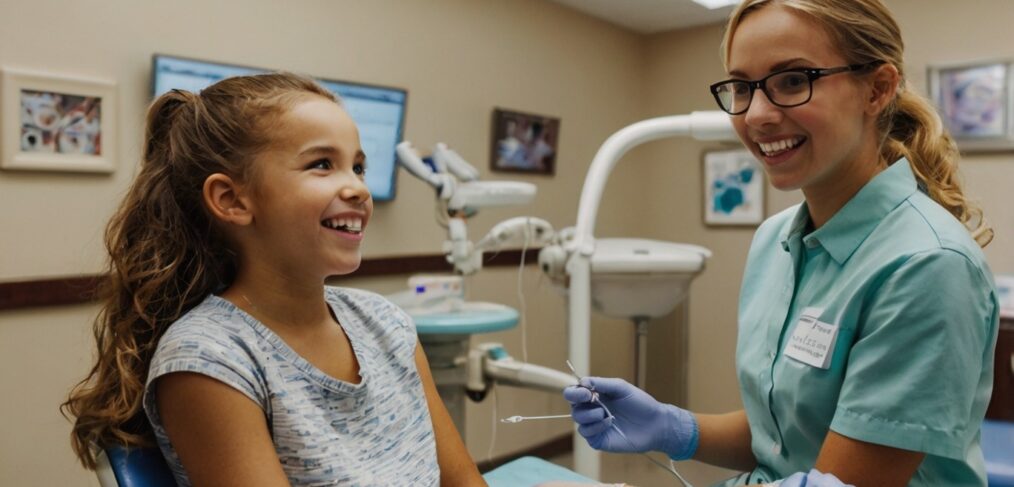Discover expert strategies to help sensory-sensitive kids overcome dental anxiety, from choosing the right dentist to at-home desensitization techniques – Bee Cave Orthodontics – Austin, Texas
A trip to the dentist can be stressful for any child, but for those with sensory processing challenges—such as autism, ADHD, or sensory processing disorder (SPD)—the experience can feel overwhelming and cause dental enxiety. The bright lights, unfamiliar sounds, strange tastes, and the sensation of dental tools can trigger intense anxiety, making routine checkups a battle.
The good news? With thoughtful preparation and the right approach, parents and dental professionals can help ease these fears and dental anxiety.
Here’s how to create a calmer, more positive dental experience for kids with sensory sensitivities.
Dental Anxiety: Why Dental Visits Are Challenging for Sensory-Sensitive Kids
Children with sensory processing differences may experience:
- Auditory sensitivity (drills, suction noises, or echoing voices)
- Tactile defensiveness (discomfort with tools in their mouth or latex gloves)
- Visual overstimulation (bright overhead lights)
- Oral hypersensitivity (strong tastes of toothpaste or fluoride)
These sensory triggers can lead to meltdowns, refusal to cooperate, or even long-term dental phobia. That’s why a gentle, customized approach is essential.
1. Finding a Sensory-Friendly Dentist
Not all dental offices are equipped to handle sensory needs, so it’s important to choose a pediatric dentist with experience in:
- Sensory accommodations (dimmed lights, quieter tools, private rooms)
- Patience and flexibility (willingness to go at the child’s pace)
- Desensitization techniques (gradual exposure to dental tools)
Tip: Call ahead and ask:
- “Do you have experience treating kids with sensory sensitivities?”
- “Can we do a pre-visit to meet the dentist before the appointment?”
2. Preparing Your Child Before the Visit
Social Stories & Visual Schedules
Many children benefit from knowing exactly what will happen. Use:
- Social stories (simple, illustrated guides explaining each step)
- Video modeling (YouTube videos of kids at the dentist)
- Picture schedules (a visual timeline of the visit)
Practice at Home
- Let your child hold and explore a tooth mirror or disposable dental tools.
- Use a vibrating toothbrush to mimic the feeling of a dental cleaning.
- Play “dentist” with stuffed animals to make it a game.
3. Creating a Comforting Dental Visit
Bring Sensory Tools
- Noise-canceling headphones (to block loud sounds)
- Sunglasses or a brimmed hat (to reduce bright light sensitivity)
- Weighted lap pad or blanket (for deep pressure calming)
- Fidget toys or stress balls (to keep hands busy)
Request Accommodations
- Ask for no strong-smelling products (like alcohol-based cleaners).
- See if the dentist can use flavorless or mild-flavored toothpaste.
- Request shorter appointments with breaks if needed.
4. Gradual Desensitization (If Needed)
For highly anxious kids, consider step-by-step exposure:
- First visit: Just meet the dentist, sit in the chair, and get a toy.
- Second visit: Count teeth with a mirror (no tools).
- Third visit: Try a quick polish or fluoride treatment.
This slow approach helps build trust and reduces fear over time.
5. Positive Reinforcement & Rewards
Celebrate every small success with:
- Verbal praise (“You did such a great job opening wide!”)
- Sticker charts (track progress toward a bigger reward)
- A special treat (like a favorite activity afterward)
Avoid bribes (“If you don’t cry, you’ll get a toy”)—instead, focus on positive encouragement.
6. Alternative Sedation Options (When Necessary)
For children who still struggle with anxiety, some dentists offer:
- Nitrous oxide (laughing gas) – A mild sedative to help relaxation.
- Oral sedation – A prescribed medication to reduce anxiety.
- General anesthesia – Only for extreme cases or major procedures.
Note: Always discuss risks and benefits with your dentist first.
Patience & Persistence Pay Off
Overcoming dental anxiety in sensory-sensitive kids doesn’t happen overnight, but with preparation, the right dental team, and sensory-friendly strategies, visits can become much smoother.
Have you found a technique that works for your child? Share your experiences in the comments—your story could help another parent!
Schedule a Free Consultation Now!
- Click here to Schedule a Free Consultation now!
- Want to get to know us a little better? Check out our YouTube Videos!



